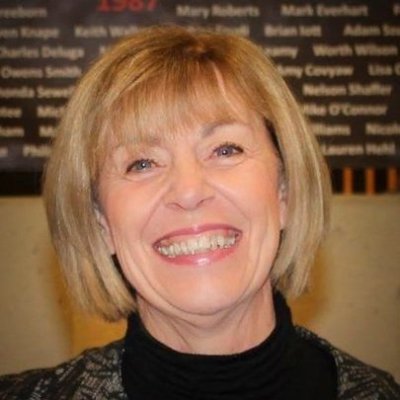Combining many RE databases into One
I've just started working with an organization that has combined a number of databases into one RE database. Unfortunately speed not accuracy seemed to be the order. Most of the users inherited the data from someone who inherited the data from ... you get the idea. As far as I know there are no best practices manuals and users were taught by someone who was taught by someone ... again, you get the idea.
Each had their own coding style, data entry style, etc.
Have you ever encountered this? Where do you start the cleanup?
Best regards,
Mary
Comments
-
Just a suggestion. I would have an attribute or constit code (some field) marked if possible with the original source of each record. I have not encountered your exact situation but I have found it very helpful for database cleanup (all records from source A have this issue) and for answering questions as to why/how record came to be in the database.
It's one bite of the elephant at a time. I'd start with constituency code and just work tabs to the right. If you use a mail house, address data style isn't a priority IMO. They adjust/fix most. If your dealing with large #s of fixes, I'd export records to excel. Sort, fix there and then import back in. Be sure to export ID's for constituent and address.
2 -
Haphazard data migrations are a nightmare! There are so many places you could start cleanup and there's no quick solution. Cleanup will take time and it's worth taking the time to do it. Before you even start the cleanup, I would suggest briefly mapping out the history of your inherited database. What sources were merged together? Were there organization level changes in the way gifts were processed/tracked? Is significant information missing? This will help you and future users have a frame of reference and will also help trigger red flags when you see data that needs to be corrected.
Next, I would advise you and your team to decide what information needs to be saved for historical purposes. For example, there was a significant shift in the way that funds were named in our organization. It was up to our development department to decide whether all funds in RE would be converted to the new naming convention or if the "old" funds would be marked inactive and a new set would replace those. We chose the latter option. It was important to note this decision so that people pulling queries remembered that they needed to include historic funds.
From there I don't think it necessarily matters where you start, but you'll probably want to focus on the portions of the database that are most utilized. In my experience, because I've been heavily involved in gift processing, I like to start cleanup by inactiving old funds and setting up the relationships between campaigns, funds, and appeals to ensure quicker and more accurate data entry.
2 -
Mary Kern:
Hi all,
I've just started working with an organization that has combined a number of databases into one RE database. Unfortunately speed not accuracy seemed to be the order. Most of the users inherited the data from someone who inherited the data from ... you get the idea. As far as I know there are no best practices manuals and users were taught by someone who was taught by someone ... again, you get the idea.
Each had their own coding style, data entry style, etc.
Have you ever encountered this? Where do you start the cleanup?
Best regards,
MaryI would take this as opportunity to document and standardize records as you want them to be. I would start with your board members, document required fields, contact types, addressee/salutations, active vs inactive attributes, etc. Take screenshots, use these records as templates for future cleanup. Create an attribute called "Data Standardization" with a related table with 2 values: "Updated", "Issue Updating" and the date and comment field used to annotate each record (especially if there's missing data that prevents standardization). Create a query for every record that does not have this attribute (specific attirbute import id = blank) and use that query as business rule so that whenever anyone opens a record they can be prompted with message along the lines of: This record has not yet been standardized. Please follow instructions in X to standardize this record and flag with Data Standardization attirbute. Once your board members are done and you have thorough screenshots and easy to follow steps to standardized (use default sets to speed data entry, etc.), then move on to your top 200 donors. Once board and top 200 donors are done, make sure each front-line fundraiser begins to standardize her/his active prospects. Track your progress as you go with a goal of standardizing 100 records / week. Then if it's critical you could employ other members of your organization to help (or hire outside help) where you set goals for higher numbers per week to reach goal of I would also do as much globally as you can (purchase Address Accelerator, export / import, configure global addressees and saluations, make nickname & spouse nickname fields required (even if same as first name) - so much easier to pull nametags and event lists if everyone has same field populated. Lastly I would also limit your database to 4 contact types per record (Email, Mobile, Home, Business).
2 -
Mary Kern:
Hi all,
I've just started working with an organization that has combined a number of databases into one RE database. Unfortunately speed not accuracy seemed to be the order. Most of the users inherited the data from someone who inherited the data from ... you get the idea. As far as I know there are no best practices manuals and users were taught by someone who was taught by someone ... again, you get the idea.
Each had their own coding style, data entry style, etc.
Have you ever encountered this? Where do you start the cleanup?
Best regards,
MaryHi Mary,
I have had this occur at the last 3 places I have worked. I try to prioritize the main issues.
The CFA structure and how you can use Global change to fix that and get everyone on the same page - and make sure ID's are synced with Finance
The Closest Top Constituents and Donors - Set Data Standards and get those records cleaned up and have the rest follow.
It will take a lot of time and effort - it will be one daya at a time
Another thing may be standardizing and rebuiding Constituent ID's to be numeric so you can data warehouse or use them in Excel or Access, (All six digit perhaps a specific range for each data source if that is helpful) I have found that some folks converted data and used prefixes with alpha characters which made things a nightmare if you need to sort the field or use it with Wealth ratings or other things later on.
Addressee and Salutation records - always a nightmare to clean up - but worth it. Set those standards and make them auto populate if you can.
2 -
oh so much fun.... You can start by making a list of all the places you see crazy (sounds like several) -- you will be adding to the list as you go because new cans of worms will be discovered of course. Once you have a list - priortize by importance - meaning impact on daily function and fix those first and then work your way down the list. I am still cleaning up neglected/misunderstood data and I have been at this current job 3 1/2 years. It's take awhile, but if you can chip away at it with at least 30 minutes a day you can really make some progress without feeling overwhelmed. Good luck!Mary Kern:
Hi all,
I've just started working with an organization that has combined a number of databases into one RE database. Unfortunately speed not accuracy seemed to be the order. Most of the users inherited the data from someone who inherited the data from ... you get the idea. As far as I know there are no best practices manuals and users were taught by someone who was taught by someone ... again, you get the idea.
Each had their own coding style, data entry style, etc.
Have you ever encountered this? Where do you start the cleanup?
Best regards,
Mary1 -
Hi Mary,Mary Kern:
Hi all,
I've just started working with an organization that has combined a number of databases into one RE database. Unfortunately speed not accuracy seemed to be the order. Most of the users inherited the data from someone who inherited the data from ... you get the idea. As far as I know there are no best practices manuals and users were taught by someone who was taught by someone ... again, you get the idea.
Each had their own coding style, data entry style, etc.
Have you ever encountered this? Where do you start the cleanup?
Best regards,
Mary
(I didn't read the other responses so apologize if this is duplicate info) We went through this exact thing a few years ago. The organizaiton had gone through the database merge process prior to my working for them. One of my roles became standardizing the data to reduce/elliminate the manual clean up that was a result of the merge. I went back to the BlackBaud consultant who talked to our Org pre merge. Of course before we did any clean up we needed to know "how" we wanted information structured but she helped guide us through. I created a timeline of sorts and broke the database apart in areas of focus. Then we moved through the clean up piece by piece. I'm happy to share more detail of the steps if you'd like. Every shop is different but there may be some nuggets you can take from it.
1 -
Thanks! That helps!
Best regards,
Mary0
Categories
- All Categories
- Shannon parent
- shannon 2
- shannon 1
- 21 Advocacy DC Users Group
- 14 BBCRM PAG Discussions
- 89 High Education Program Advisory Group (HE PAG)
- 28 Luminate CRM DC Users Group
- 8 DC Luminate CRM Users Group
- Luminate PAG
- 5.9K Blackbaud Altru®
- 58 Blackbaud Award Management™ and Blackbaud Stewardship Management™
- 409 bbcon®
- 2.1K Blackbaud CRM™ and Blackbaud Internet Solutions™
- donorCentrics®
- 1.1K Blackbaud eTapestry®
- 2.8K Blackbaud Financial Edge NXT®
- 1.1K Blackbaud Grantmaking™
- 527 Education Management Solutions for Higher Education
- 1 JustGiving® from Blackbaud®
- 4.6K Education Management Solutions for K-12 Schools
- Blackbaud Luminate Online & Blackbaud TeamRaiser
- 16.4K Blackbaud Raiser's Edge NXT®
- 4.1K SKY Developer
- 547 ResearchPoint™
- 151 Blackbaud Tuition Management™
- 61 everydayhero
- 3 Campaign Ideas
- 58 General Discussion
- 115 Blackbaud ID
- 87 K-12 Blackbaud ID
- 6 Admin Console
- 949 Organizational Best Practices
- 353 The Tap (Just for Fun)
- 235 Blackbaud Community Feedback Forum
- 55 Admissions Event Management EAP
- 18 MobilePay Terminal + BBID Canada EAP
- 36 EAP for New Email Campaigns Experience in Blackbaud Luminate Online®
- 109 EAP for 360 Student Profile in Blackbaud Student Information System
- 41 EAP for Assessment Builder in Blackbaud Learning Management System™
- 9 Technical Preview for SKY API for Blackbaud CRM™ and Blackbaud Altru®
- 55 Community Advisory Group
- 46 Blackbaud Community Ideas
- 26 Blackbaud Community Challenges
- 7 Security Testing Forum
- 3 Blackbaud Staff Discussions
- 1 Blackbaud Partners Discussions
- 1 Blackbaud Giving Search™
- 35 EAP Student Assignment Details and Assignment Center
- 39 EAP Core - Roles and Tasks
- 59 Blackbaud Community All-Stars Discussions
- 20 Blackbaud Raiser's Edge NXT® Online Giving EAP
- Diocesan Blackbaud Raiser’s Edge NXT® User’s Group
- 2 Blackbaud Consultant’s Community
- 43 End of Term Grade Entry EAP
- 92 EAP for Query in Blackbaud Raiser's Edge NXT®
- 38 Standard Reports for Blackbaud Raiser's Edge NXT® EAP
- 12 Payments Assistant for Blackbaud Financial Edge NXT® EAP
- 6 Ask an All Star (Austen Brown)
- 8 Ask an All-Star Alex Wong (Blackbaud Raiser's Edge NXT®)
- 1 Ask an All-Star Alex Wong (Blackbaud Financial Edge NXT®)
- 6 Ask an All-Star (Christine Robertson)
- 21 Ask an Expert (Anthony Gallo)
- Blackbaud Francophone Group
- 22 Ask an Expert (David Springer)
- 4 Raiser's Edge NXT PowerUp Challenge #1 (Query)
- 6 Ask an All-Star Sunshine Reinken Watson and Carlene Johnson
- 4 Raiser's Edge NXT PowerUp Challenge: Events
- 14 Ask an All-Star (Elizabeth Johnson)
- 7 Ask an Expert (Stephen Churchill)
- 2025 ARCHIVED FORUM POSTS
- 322 ARCHIVED | Financial Edge® Tips and Tricks
- 164 ARCHIVED | Raiser's Edge® Blog
- 300 ARCHIVED | Raiser's Edge® Blog
- 441 ARCHIVED | Blackbaud Altru® Tips and Tricks
- 66 ARCHIVED | Blackbaud NetCommunity™ Blog
- 211 ARCHIVED | Blackbaud Target Analytics® Tips and Tricks
- 47 Blackbaud CRM Higher Ed Product Advisory Group (HE PAG)
- Luminate CRM DC Users Group
- 225 ARCHIVED | Blackbaud eTapestry® Tips and Tricks
- 1 Blackbaud eTapestry® Know How Blog
- 19 Blackbaud CRM Product Advisory Group (BBCRM PAG)
- 1 Blackbaud K-12 Education Solutions™ Blog
- 280 ARCHIVED | Mixed Community Announcements
- 3 ARCHIVED | Blackbaud Corporations™ & Blackbaud Foundations™ Hosting Status
- 1 npEngage
- 24 ARCHIVED | K-12 Announcements
- 15 ARCHIVED | FIMS Host*Net Hosting Status
- 23 ARCHIVED | Blackbaud Outcomes & Online Applications (IGAM) Hosting Status
- 22 ARCHIVED | Blackbaud DonorCentral Hosting Status
- 14 ARCHIVED | Blackbaud Grantmaking™ UK Hosting Status
- 117 ARCHIVED | Blackbaud CRM™ and Blackbaud Internet Solutions™ Announcements
- 50 Blackbaud NetCommunity™ Blog
- 169 ARCHIVED | Blackbaud Grantmaking™ Tips and Tricks
- Advocacy DC Users Group
- 718 Community News
- Blackbaud Altru® Hosting Status
- 104 ARCHIVED | Member Spotlight
- 145 ARCHIVED | Hosting Blog
- 149 JustGiving® from Blackbaud® Blog
- 97 ARCHIVED | bbcon® Blogs
- 19 ARCHIVED | Blackbaud Luminate CRM™ Announcements
- 161 Luminate Advocacy News
- 187 Organizational Best Practices Blog
- 67 everydayhero Blog
- 52 Blackbaud SKY® Reporting Announcements
- 17 ARCHIVED | Blackbaud SKY® Reporting for K-12 Announcements
- 3 Luminate Online Product Advisory Group (LO PAG)
- 81 ARCHIVED | JustGiving® from Blackbaud® Tips and Tricks
- 1 ARCHIVED | K-12 Conference Blog
- Blackbaud Church Management™ Announcements
- ARCHIVED | Blackbaud Award Management™ and Blackbaud Stewardship Management™ Announcements
- 1 Blackbaud Peer-to-Peer Fundraising™, Powered by JustGiving® Blogs
- 39 Tips, Tricks, and Timesavers!
- 56 Blackbaud Church Management™ Resources
- 154 Blackbaud Church Management™ Announcements
- 1 ARCHIVED | Blackbaud Church Management™ Tips and Tricks
- 11 ARCHIVED | Blackbaud Higher Education Solutions™ Announcements
- 7 ARCHIVED | Blackbaud Guided Fundraising™ Blog
- 2 Blackbaud Fundraiser Performance Management™ Blog
- 9 Foundations Events and Content
- 14 ARCHIVED | Blog Posts
- 2 ARCHIVED | Blackbaud FIMS™ Announcement and Tips
- 59 Blackbaud Partner Announcements
- 10 ARCHIVED | Blackbaud Impact Edge™ EAP Blogs
- 1 Community Help Blogs
- Diocesan Blackbaud Raiser’s Edge NXT® Users' Group
- Blackbaud Consultant’s Community
- Blackbaud Francophone Group
- 1 BLOG ARCHIVE CATEGORY
- Blackbaud Community™ Discussions
- 8.3K Blackbaud Luminate Online® & Blackbaud TeamRaiser® Discussions
- 5.7K Jobs Board


 Community All-Star
Community All-Star



